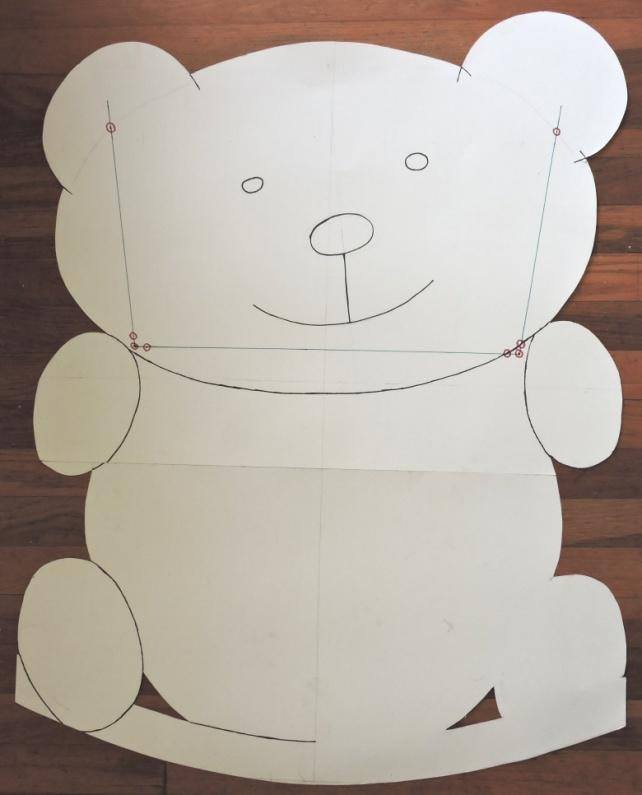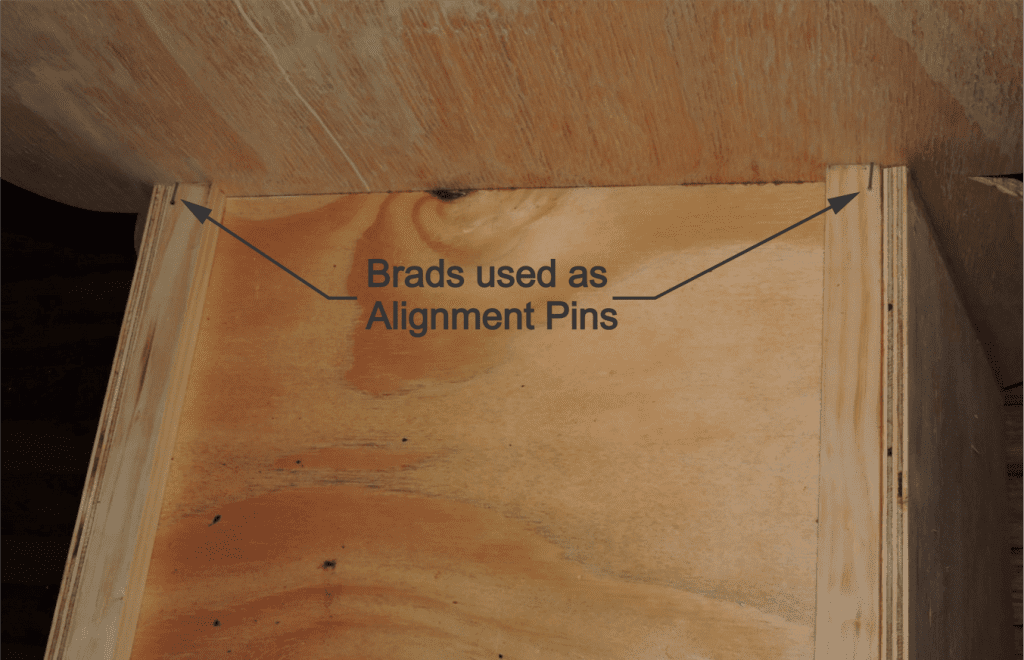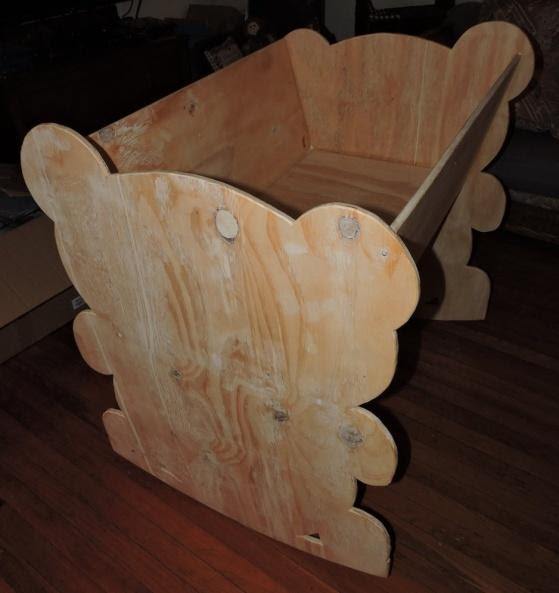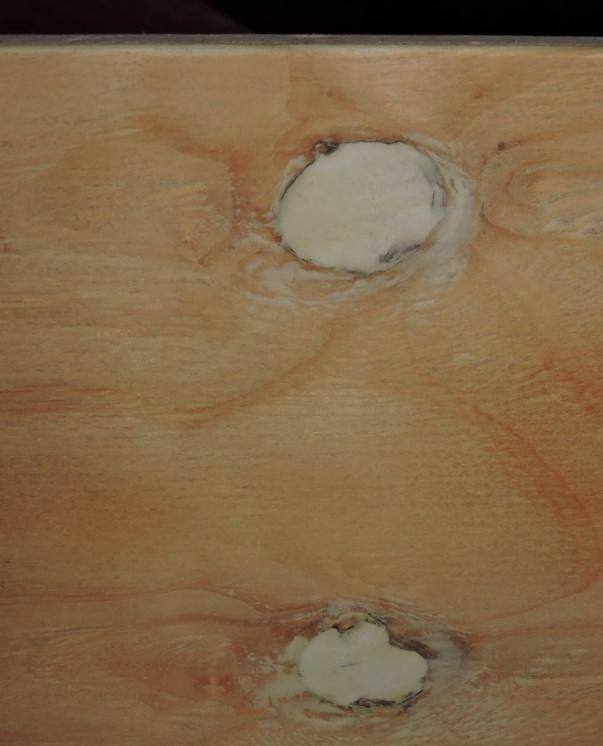Many of the projects that DIY woodworkers build are for the use of their family. A need or even desire in the family is seen as an opportunity to show off our skills, making something that will hopefully be appreciated and used. Hence, when my youngest daughter became pregnant, it was a good time to make a baby cradle for her.
Cradles aren’t as commonly used as they once were, with most people going right to a baby bed. But they have a long history, as the cradle was the primary form of baby bed in use before the 1900s. Cradles weren’t necessarily consistent, as anything from a hollowed-out log to what we think of as the traditional colonial-style cradle was used. There were only two main concerns; that it be big enough for the baby and that it rocks.
Any parent knows that it can be difficult to get babies to sleep at times. One of the tricks we all learn to use is motion. For some reason, motion is soothing to a baby and will help them go to sleep. So, whether it is taking the baby for a drive in the car or rocking them in their cradle, we make use of it. Making a cradle which doesn’t rock is almost a waste of time.
Since this is a plywood website, I’ve decided to make the cradle out of plywood and since babies and teddy bears seem to go together, I’ve made a teddy bear cradle.
The design I came up with requires only one sheet of plywood. Even so, I cheated slightly, using a piece of 5/8” thick plywood for the bottom of the cradle, along with two strips of 1”x 2” to hold it all together. Everything else is made of ½” plywood; actually, since it was to be painted, it was made from BC grade softwood plywood.
It would have been better to make the entire thing out of cabinet-grade hardwood plywood, but I didn’t have any available at the time. Living in a small town, it can be difficult to get what one needs for every project. Creative adjustments to designs and substitutions of materials are often required. In this case, using BC grade softwood plywood meant that there were knotholes and splits in the face veneer, as well as rough grain, especially on the C grade side, requiring filling and sanding to make it smooth.
Laying Out the Cradle Parts
Cradles can be split into two categories: high cradles and low cradles. Low cradles have the baby within a foot of the ground, as the classic cradles of the 19th century were built. Most cradles today are a high design, with the mattress 12” to 18” off the floor. This makes it much easier for mom and dad to rock the cradle, adjust blankets and pick up the baby out of it.
For the teddy bear cradle, I settled on an overall size for the ends of 28” wide and 36” tall. This was partially due to the standard cradle mattress size, which is 18”x 36”. The 28” width was necessary to develop the design of the teddy bear on the ends.

The basic design for the cradle came from looking at clipart of teddy bears online. Rather than just use one bear, I found three different ones, which I combined together to make the teddy bear design that I wanted. I used the basic body shape for one, the paws from a second and the face from a third. This was laid out on two pieces of white poster board, which were taped together to make a piece large enough for the pattern.
The actual drawing of the pattern was performed freehand. In order to make the head tilted to one side, with one ear higher than the other, it was necessary to draw out the entire head freehand. However, for the body, only ½ was drawn, and then the mirror image created by tracing it, once the outline had been cut.
For those who are uncomfortable drawing out the pattern freehand, a picture of the clipart being used to generate the pattern can be taken and then projected onto the poster board, allowing it to be traced. A thin piece of wood makes an admirable drafting curve, bending it to match the curve needed and then tracing alongside it with a pencil. Some extra hands might be needed for that part.
Making the Ends
Two identical ½ inch thick plywood panels are cut to 28” by 36” for the two ends. When cutting cross grain to the face veneer, it’s necessary to take some action to prevent splintering. This can be in the form of putting a strip of masking tape over the cut line or pre-cutting through the face veneer with a utility knife and a straight edge.
The pattern is traced from the template onto the plywood. Rather than doing this with pencil, I used a Sharpie marker, in order to have a line that was more readily visible, especially when partially covered by sawdust.
The teddy bears are a bit big to cut with a band saw or scroll saw, so that leaves either a handheld jigsaw or a Rotozip tool. Using a jigsaw poses the same problem with splintering, and since there really isn’t a “back side” (both sides will be visible), that splintering can’t be hidden. The problem with using a Rotozip though, is that it is actually rather hard to make a clean line without a lot of practice. The cut line usually ends up looking more like a series of drill holes, overlapping each other. But that’s not really a problem, as we’ll see in a minute.
I don’t have a Rotozip, so I used my cordless router. The router is about four times as heavy as the Rotozip, which adds stability but is a bit more tiring for the hand. In order to get the Rotozip bits to fit in the router, a 1/8” to ¼” collet is needed. With that in place, the Rotozip bits work fine in the router.
Regardless of whether a router, Rotozip or jigsaw are used, the edges should be sanded to remove any waviness, rough spots and inconsistencies. For this design, this is best done with a drum sander; either a drum held in a drill press or an oscillating spindle sander. The drum sander will take material off faster than a vibratory sander will, while providing a smooth edge. However, caution must be taken to keep the piece moving, to prevent making a dip in the edge.
When working with a drum sander of any sort, the best results come from using a large diameter drum. But those won’t get into the corner. So I start with a small one, just to do the corners, and then replace it with a larger one. Final sanding, right in the corners, is done by hand.
At this point, many woodworkers would choose to band the edges of the plywood, which would be a good choice. Softwood plywood tends to have voids in it and even the veneers used in the core can provide very rough grain. Rather than taking the time to band the edges, which can be tricky with curves like this, I choose to rout the edges, using my cordless router once again, this time holding a 1/8” roundover bit.
Making the Cradle Box
The cradle box itself consists of three pieces of plywood, with the sides being made of 1/2” material and the bottom being made of 5/8”. I could have used ½” for the bottom as well, as it would have been strong enough to support the weight without any problem, but I decided to use the thicker material for greater rigidity.
The bottom piece of the cradle box is 18”x 36” to match the size of the mattress. Two 36” long pieces of 1”x 2” were glued and nailed to the bottom side of it, flush with both edges. Adding this provides a larger surface area for the sides to attach to, making the box stronger and ensuring that the sides of the cradle are held securely at the correct angle in relation to the bottom.

The two sides are cut from the same sheet of ½” plywood as the teddy bears. They are 14” high by 36” long. Once again, care must be taken to avoid splintering of the plywood. However, in this case, any splintering of at least one edge of the sides can be hidden by putting it up against the 1”x 2” connecting strips. Rout both sides of what will be the top edge with the same 1/8” roundover bit to eliminate any sharp, scratchy edges.
The sides are attached to the bottom with wood screw and glue. I used five screws per side, which is probably overkill. But then, it’s a cradle, we don’t want to take any chances with the baby. Pilot drill and countersink the hole, so that the screw heads are below flush.
Attaching the Teddy Bears to the Box
Perhaps the trickiest part of this project is attaching the teddy bear ends to the box of the cradle itself. The tricky part is aligning the parts, as there are no straight edges on the teddy bear ends. So it’s not like the workbench can be used as a point of reference for aligning; although, setting the box level, at the right height, propped up above the workbench would be useful. However, I didn’t have that option available at the time, due to other projects taking up workbench space.
When I had created the pattern, I also drew the location of the cradle box on it. This gave me a point of reference I could use, if I transferred it to the teddy bears. All it took to transfer those points of reference were to put the pattern back on the inner side of the teddy bears, align the edges, and then use an automatic center punch to mark the corner and about one inch down each leg of the lines from those corners. If an automatic center punch is unavailable, a nail can be used.

Removing the pattern, nail brads partially into the plywood at those points. This provides stops that can be used for aligning the box and ends. stand the box up on end and place one teddy bear on it, aligning the brads with the sides and bottom of the box. Drill, countersink and screw the end to the box. Once again, I went for overkill, especially on the bottom, with only two screws on each side.
Repeat this procedure for the other teddy bear end. The cradle should look something like this.

By the way, I’ve used the aforementioned method of propping the cradle box over the workbench before. While it works well for things that have a straight, square bottom, it doesn’t work all that well for cradles, because of the curved bottom. The parts have to be aligned by eyeball, which doesn’t provide as accurate a location.
Dealing with the Rough Plywood
As mentioned earlier, this project was made of softwood plywood, the same stuff used for construction. When used in building homes, this sort of plywood is almost always covered up, hiding it. So the surface finish isn’t all that good. I would have loved to get my hands on some nice birch plywood or even some AA grade softwood plywood, but that just didn’t happen. So I had to deal with the knotholes, splits and rough grain that the plywood I had left me with.
This isn’t as bad as it may seem. I’ve made a lot of projects where I used softwood plywood for things that one wouldn’t expect to. As long as the project is going to be painted, it works out well. It just takes a little time to put a nice finish on the plywood.

Before getting down to the serious smoothing, sand the entire surface of the project, especially the edges. All that’s needed at this point is a rough sanding; 80 or 100 grit will do.
All of all the imperfections in the wood will need to be filled. This can be done with wood putty, drywall mud, or spackling. I like using ultra-light spackling, because it doesn’t shrink much. But I wouldn’t use that on an indoor jungle gym, as the kids would probably bust it up, kickin it.
For the first coating of filler, just fill the knothole and split in the plywood’s surface. Once that dries, sand the excess filler off, eliminating high points. Then skim coat the entire surface with the filler. This will make up for any shrinkage in the knotholes, while also filling in rough grain on the plywood’s surface. The filler can be wiped smooth with a putty knife, but don’t overdo it. It’s better to apply a coating of filler that’s just a touch thick and have to sand it down later, than to have to apply a third coat.
Those same products can be used for the edges as well; but I prefer to use acrylic painter’s caulk, spread into the grain with a finger. The end grain tends to soak in the filler a bit too well, which doesn’t happen as much with the caulking. However, more care must be taken with the caulking, as it doesn’t sand well. If too much is left sticking up, it’s hard to smooth it back down.
While the caulk gun is out, it’s a good idea to caulk all the seams between parts. There’s too much of a chance of germs growing in those areas, to leave them open. filling them will make it easier to clean the cradle and help protect the baby from infection.
Once the putty and caulking dries, the cradle can be painted. I used normal interior latex house paint for it, with the exception of some of the design details. Those were painted on with acrylic artist’s paint; but house paint will work for them as well. I’m not sure if other places do the same, but Builder’s square sells a “sample” size of their Behr paint; it’s about ½ pint. This is ideal for those times when we need just a little bit of paint for details like this. The Behr paint covers extremely well too, as it is a heavy-bodied paint.
